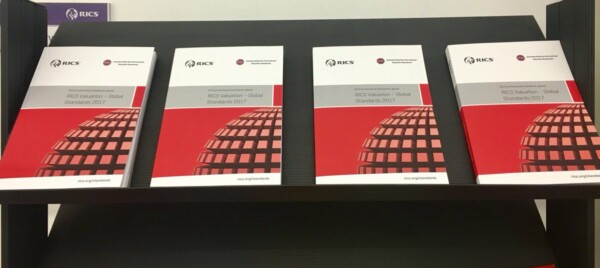The Red Book.

Recent changes and what they mean for you
FIONA HAGGETT BSc (Hons) FRICS OPERATIONS DIRECTOR, BLUEBOX PARTNERS
The RICS Valuation Professional Standards (Red Book) has long been the backbone of valuation, first in the UK and now globally. The Red Book provides a framework, within the rules of conduct, to ensure that users can be confident that the valuations they instruct are consistent, transparent and produced in line with international valuation standards. Fiona Haggett looks at the changes for 2018.
Global Red Book update
The Global Red Book was updated in 2017. For residential valuers the changes were not huge, but included:
• A formal recognition that oral advice comes under the Red Book requirements (PS1).
• Recognition of the new global Ethics Standards and International Property Measurement Standards (PS2).
• A requirement to specify valuation currency and any limitations on liability that have been agreed in the terms of engagement and report (VPS 1 & 3).
• A requirement to choose the appropriate valuation method for any job and to be able to justify and explain this choice (VPS5).
UK Red Book update
It’s now the turn of the UK supplement to be reviewed. The draft document has been through the consultation process and is scheduled for publication at the end of 2018. For context the UK Red Book sits beneath the global version and is intended to set out the implementation of the Global Valuation Standards in a UK context.
RICS also intend to produce additional Jurisdiction Guides to support the Global Red Book. These documents will explain the adoption of standards in each global market and to cover regulation of the standards. The publication date for the UK Jurisdiction Guide hasn’t been announced.
Proposed changes
The draft UK Red Book supplement shows that a number of proposed changes, particularly within valuation for secured lending.
Firstly, RICS have added a commercial valuation for secured lending protocol. This used to be part of the Red Book but was removed some years ago. The industry felt a need to reintroduce certain standards specific to this sector. This is a short section, covered in the new VPGA7.
The residential secured lending standards have also undergone a number of changes. They have been pulled together into one main section of the Red Book (VPGA8), supported by VPGA 9, which covers associated items (for example, HBR).
The residential standard starts by defining the role and remit of a valuer in a secured lending context as follows:
“… to advise the lender on:
- the nature of the property and factors that are likely to materially affect its value that are revealed during the process and/or inspection
- the market value (and/or market rent if required), with specified assumptions or
- (exceptionally) special assumptions and
- risks associated with the property that may have a material impact on its value”.
The remit is defined as follows:
“…to provide an objective valuation opinion having regard to the lender’s policy and requirements. Decisions on mortgage term, size of advance and lending outcome are a matter for the lender, though the valuer may highlight and report on specific risks, particularly if these are likely to have a material effect on value or are likely to prove critical to a lending decision.”
The standard also clarifies that the remit is also as defined by the terms of engagement or terms of reference and that parties cannot rely on any terms outside the contents of the agreement.
Assumptions and special assumptions
The role and remit of the valuer carries through to the section on assumptions and special assumptions (UKVPGA 8.5). Here it is specified that, in an absence of information, a valuer is expected to make: “verbal enquiries of an owner/ occupier or selling agent regarding any elements of the property that may have an impact on value”.
This makes it clear that an automatic or default reliance on standard assumptions as laid down in VPGA8 (previously UK Appendix 10) is not acceptable and that professionals must make some effort to establish details before providing a valuation figure. The standards then clarify further, by stating that there is no duty for a valuer to read the full lease, search for statutory notices or to purchase data from a third party. In doing this, they look to prevent a ‘creep’ of lender expectations on limited inspection and valuation.
Changing industry
VPGA 8.3 addresses the changing nature of the industry by providing expectations around the increasing number of valuations that are now completed without a full inspection. It is made clear that lenders must understand the consequent risks and limitations to liability that such a valuation produces, and it looks to ensure that such reports are not onwardly disclosed by lenders.
The final big change is to the basis of value formally known as PMV (Projected Market Value). This has been much misunderstood over the years and has been often misused as a forced sale valuation. PMV has always been a market value with a ‘special assumption’ of sale at a specified date in the future. In other words, a numeric indication of short-term market trends. The new UK Red Book seeks to address this by redefining (or removing) PMV, though the draft version was inconsistent in its approach. This should be fully clarified in the final document.
Residential valuers must be fully aware of the changes to the UK Red Book and acquaint themselves with the revised requirements when it is published later in the year. If there is one overriding message that comes out of the draft document, and associated guidance under development, it is that no valuer should default to special assumptions without first making a reasonable attempt to establish the facts. This is surely something that we, as professionals, would always look to do.